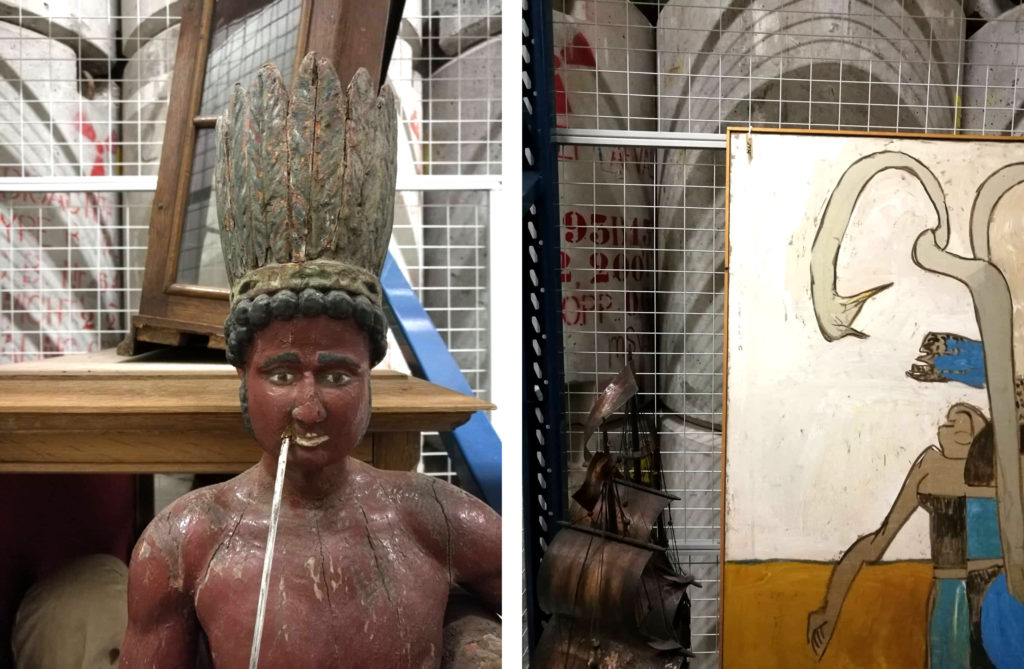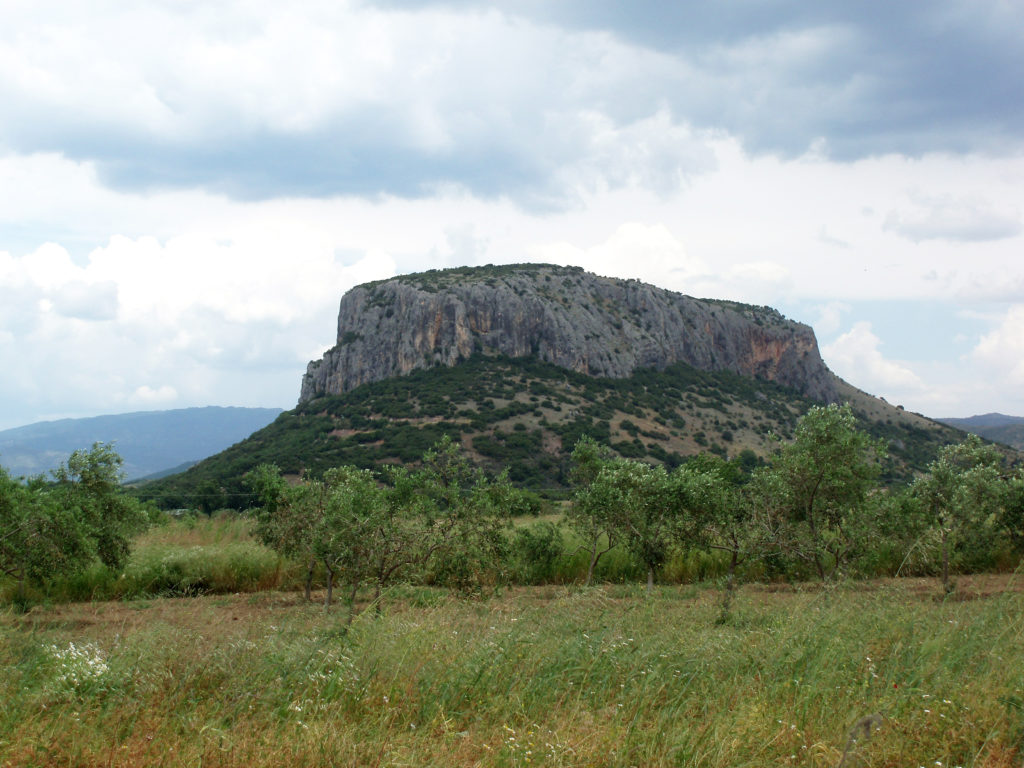(picture: the author)
Marilena Mela
The idea for this blog came during a visit to the facilities of COVRA, the Dutch radioactive waste management company, organized by the Environmental Humanities Centre of Vrije Universiteit Amsterdam [1].
What do the practices of heritage management and nuclear waste management have in common? Why does a heavily reinforced concrete building in the far south of the Netherlands co-host museum artefacts and cylinders of 1980’s nuclear waste? What does this say about our understanding of intergenerational communication? The answers inevitably have to do with the most fascinating yet cruel among our concepts: time.
Nuclear waste can take hundreds of thousands of years to get deactivated; and this long process has forced humankind to face its existence in the very distant future [2]. A pressing question is how to signal danger on the sites of waste isolation to responsibly protect future generations, when language or any other semiotic system might have lost any meaning. Art and science have often collaborated towards this goal, attempting to create ‘landscapes of repulsion’ [3], assuming humans share sensory reactions in a pan-cultural way. Another interesting insight comes from archaeology: isn’t the durability of nuclear waste an opportunity for us to transmit knowledge to future generations, regarding energy production and waste disposal [4]?

Pictures 1 and 2: The coexistence of nuclear waste and museum artefacts at the COVRA facilities
Source: the author
We human have difficulties grasping the immensity of deep [5] time, the one that is measured in hundreds thousands or millions years, and not in decades or centuries. In order to imagine what it means to ‘leave something’ for someone to interpret after hundreds of thousands years, let’s attempt to go that much back in time. One of the first material signs of humankind comes from the Theopetra cave in Greece. The most widely accepted story says that some Neanderthal kids left their footprints around 135,000 years ago. But none of this information is – and can never be – confirmed: the lead archaeologist describes how this footprints could also be attributed to adult men, to homo sapiens, and/or to a much later time in history [6]. This is the level of uncertainty we face when attempting to understand information from a hundred thousand years back.
We traveled far in the future and in the past, and it is time to return to the present: this is where the world ‘heritage’ claims any meaning. Our management of time, our interpretations of the future and the past, happen now. This is why COVRA, the Dutch radioactive waste management company, cleverly houses a big amount of museum artefacts in its facilities. Waste and heritage objects will be co-housed for 100 years, creating a surrealistic environment (see Pictures 1 and 2), perhaps in an attempt to make waste comprehensible, and to neutralize it in the public opinion. In a well-told story, art and heritage have been employed to showcase the cultural aspect of waste, and the challenges of long-term preservation. There is, however, one universal conceptual space where past and future necessarily live together: the landscape. The Neanderthal kids of our story once faced the silhouette of the Meteora rocks (see Picture 3). Nobody knows if the enormous transformations of the Anthropocene will allow similar views to our potential descendants. All we can do is speculate; and to allow space for coexistence of disciplines, of people, of all the stories we tell ourselves and each other in our attempts to manage uncertainty.

Picture 3: The Theopetra rock in Meteora, Greece. Limestone rock, dated to 135-65 million years BC. Notice also the orange trees, sign of human habitation, on the foreground.
Source: Wikimedia commons
Footnotes:
[1] The event, entitled “Nuclear Waste and Future Heritage” took place on 9 October 2019, and was organized by Kyveli Mavrokordopoulou and Ruby de Vos. For a compelling account of the excursion, and some interesting insights of the interrelations of nuclear waste and the arts, see this blog post by Ruby de Vos (PhD at the University of Groningen).
[2] A series of broadly interdisciplinary discussions on the temporality of waste is described by Kyveli Mavrokordopoulou in her blog post “From “matter out of place’’ to “matter out of time’’: some thoughts on waste and temporality”
[3] See for an account of such attempts Martin J. Pasqualetti (1997), Landscape Permanence and Nuclear Warnings, Geographical Review 87 (1): 73-91.
[4] For the relationship between nuclear waste management, archaeology, and conservation, see a series of articles on the Heritages Futures platform. A useful introduction is Cornelius Holtorf’s article “Making futures and making connections across sectors”, which includes a presentation of the COVRA facilities.
[5] For an explanation of the term deep history see here.
[6] An account of the works at the site and an interpretation of findings by Dr Nina Kyparissi- Apostolika can be found here.

